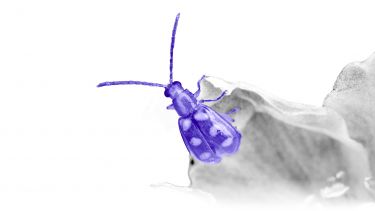Have we turned plants against us?
Air pollution is a growing threat to our health and climate. But research by Dr Stuart Campbell found that its effects on plants could be worse than we initially thought.

Air pollution is one of the largest environmental health risks that humans face today. According to the World Health Organisation it causes approximately seven million early deaths worldwide each year.
One of the most harmful contributors to air pollution is a highly reactive gas named nitrogen dioxide. Formed by burning fuel at high temperatures, such as emissions from vehicles and power plants, it is a major component of smog (a mixture of smoke and fog) and is responsible for its dark reddish colour. At high concentrations it is severely toxic and can irritate the respiratory system as well as develop diseases such as asthma after long exposure.
The adverse effects of pollution on human health are well documented, but what about the health of other ecosystems that live in our highly polluted cities?
An ecosystem refers to a biological community of living organisms in their physical environment. In urban ecosystems, plants have the ability to reduce the levels of air pollution in their environment by absorbing carbon dioxide and filtering pollutants like nitrogen dioxide through their leaves. But how do these plants react to growing levels of air pollution in the atmosphere?
Funded by the Natural Environment Research Council (NERC) research by Cranfield University, the University of Exeter and the University of Sheffield found that air pollution significantly impacts plants and insects in more ways than we first thought. Dr Stuart Campbell from the School of Biosciences highlights that gases such as nitrogen dioxide could be causing cascading damage to ecosystems and devastating communities of insects.
Recreating an ecosystem
With a focus of reviewing the effects of nitrogen dioxide on plants and insects Dr Stuart Campbell and his colleague, then PhD student Dana Vellano (now based at the US Environmental Protection Agency), recreated an ecosystem in a lab at the University of Sheffield. The experiment used a cultivated tobacco plant Nicotiana tabacum due to its small size and fast growing rate.
“We wanted to separate the effects of the nitrogen dioxide on the leaf tissue and the root tissue so we created our own system. We suspended the roots in a hydroponics bath and sealed a sort of floor to separate the upper and lower sections of the plants. We placed these plants into chambers and injected nitrogen dioxide into their surrounding atmosphere at a concentration level similar to what you might find in a big city. The nitrogen dioxide we used to fumigate the plant also allowed us to monitor how much of it the plant was absorbing” explains Stuart.
After a month of the plants absorbing nitrogen dioxide into their leaf tissues and roots, the second stage of the study began. Alongside additional control plants that had not been exposed to nitrogen dioxide, small caterpillars known as the tobacco hornworm Manduca sexta were brought in to feed on the plants. Their growth and performance were monitored to analyse any differences between the plants that had been exposed to the nitrogen dioxide, and control plants that hadn’t.
“We found that plants that had been exposed to nitrogen dioxide were of lower feeding quality for the insects. The leaves had produced more defensive chemicals than usual which caused the caterpillars to grow slowly and become poorly”
“We also monitored how much nitrogen dioxide was being absorbed from the atmosphere into the leaves. What really surprised us was the plants that had been fed on by insects absorbed much less nitrogen dioxide. This shows that once the insects had fed on the plant they would experience negative effects, such as slow growth, as well as reducing how well the plant could remove pollutants from the air. The combined effects could have a doubly harmful effect on urban ecosystems” adds Stuart.
High levels of pollution cause plants to produce more defensive chemicals that would prevent insects from feeding and fundamentally damage ecosystems. While there are indicators that plants help to clean the air, it isn’t clear how effective they are at it. This research suggests that the interactions between leaves and insects could be a contributing factor to altering the amount of nitrogen dioxide in cities.
Have we turned plants against us?
Nitrogen dioxide is an example of pollution caused as a direct consequence of human activity. Our reliance on fossil fuels damages air quality across the world and could contribute to more plants generating defensive chemicals and interrupting the flow of ecosystems.
“Insects are critical to the functioning of ecosystems. They are crucial for food production and also help with the long-term survival of wildflowers, shrubs and trees. The more leaves that produce these defensive chemicals, the more insects will be threatened with poor growth and reproduction” explains Stuart.
While urban green spaces in cities can help to absorb gaseous pollutants like nitrogen dioxide, the effects appear to vary between species and locations and this may be in part to the actions of these leaf-feeding insects. However further research is needed to certify whether insects are the only factor.
“In my research, my primary focus is on insects. But much more work is needed to understand the effect of urban plants on air quality. This includes more studies on different plant and insect species in cities. While there are many factors that impact the absorption of nitrogen dioxide by plants, it is clear that plant-feeding insects face a number of human threats and air pollution is one of them” adds Stuart.
Stuart is currently undertaking a four-year long project to analyse how different insects are affected by, and in turn impact, air quality in an environment. This research involves sampling plant and insect species across the UK to monitor the correlation between air pollution and the number and diversity of insects in that environment. It will also analyse the correlation between species under the stress of air pollution and the degradation of their habitats and ecosystems.
Research in his group is also looking at how insect pollinators such as bees and moths are affected by aspects of urban environments such as pollution.
Written by Alina Moore, Research Communications Coordinator


